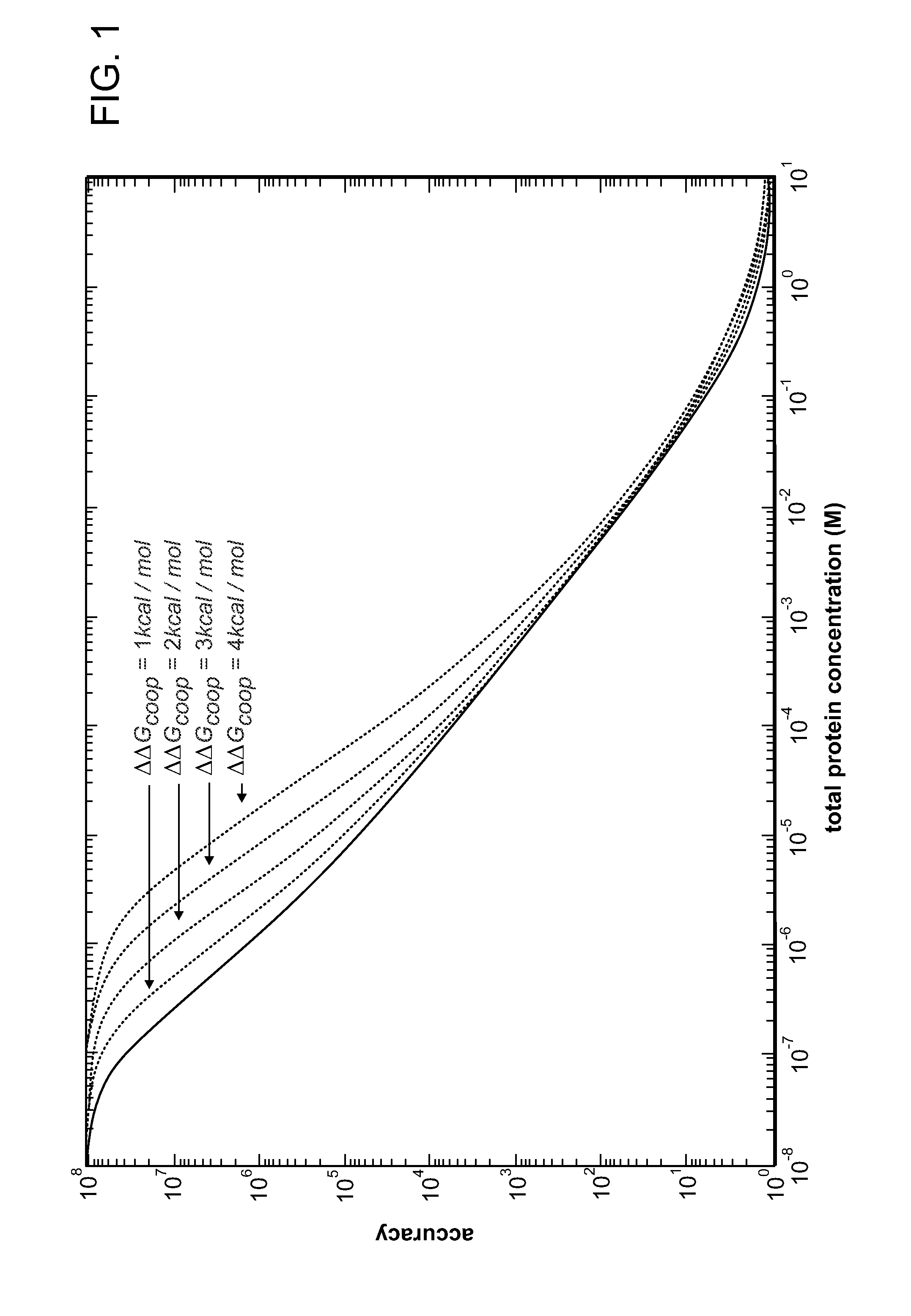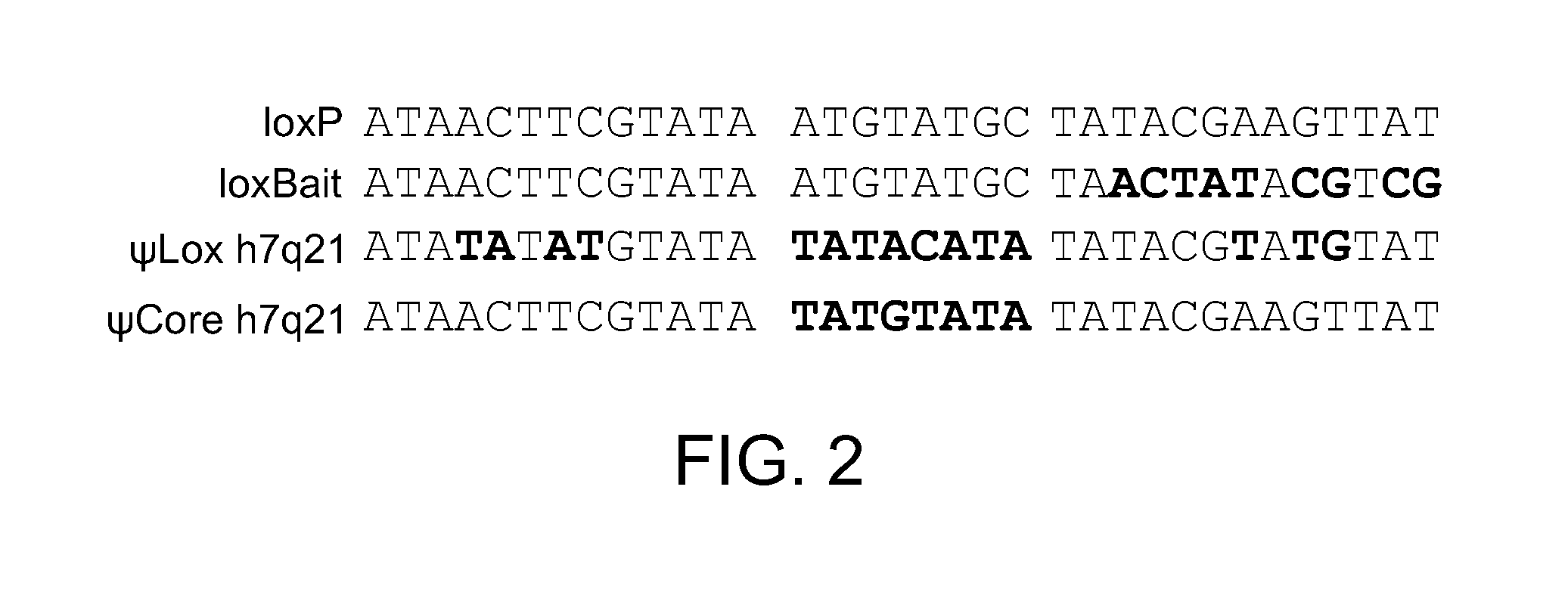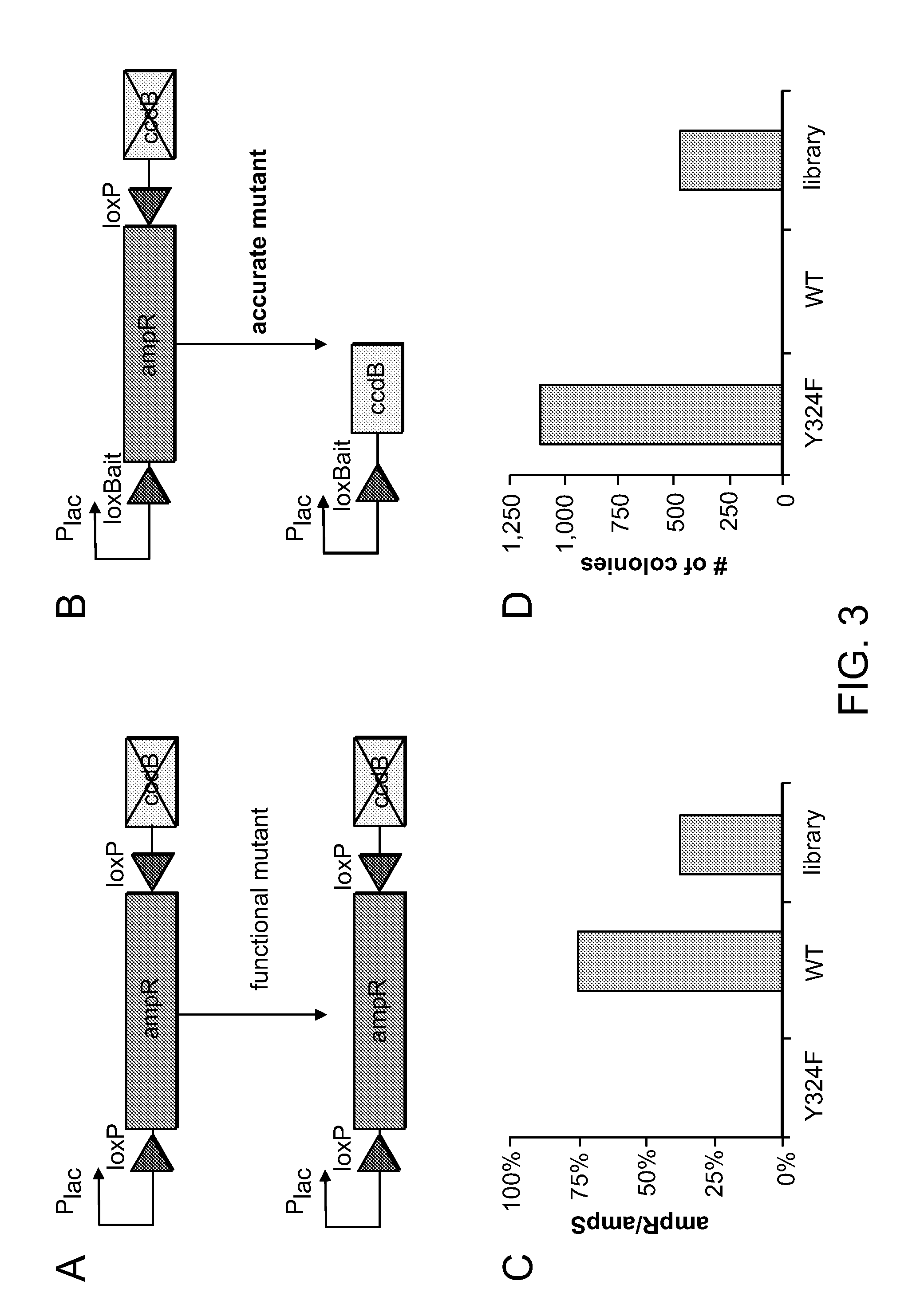Mutants of Cre Recombinase
a technology of cre recombinase and mutants, which is applied in the direction of transferases, enzymology, biochemistry apparatus and processes, etc., can solve the problems of limited technique, many existing technologies have major limitations, and the safe delivery of transgenes into the human genome, so as to improve the accuracy and directionality of catalysis, reduce the toxicity of cre-based animals, and improve the accuracy
- Summary
- Abstract
- Description
- Claims
- Application Information
AI Technical Summary
Benefits of technology
Problems solved by technology
Method used
Image
Examples
example i
Selection for Functional loxP Variants and Measurement of their Recombination Efficiency
[0046]Libraries of half-site variants were constructed by performing extension PCR on the entire pZE21G plasmid67 such that the amplification product was 2,437 bp long and contained a loxP site and a random library site near each end. The libraries were purified using the QIAquick PCR Purification Kit (Qiagen), 10-20 ng of the DNA was treated with 1 U Cre (New England Biolabs) in Cre reaction buffer (10 mM MgCl2, 33 mM NaCl, 50 mM Tris-HCl pH 7.5) in 20 μL total reaction volume for 1 hr at 37° C., heat inactivated at 75-80° C., then digested with DpnI. The DNA was then purified, digested with PlasmidSafe (Epicentre), and transformed into One Shot Top10 chemically competent cells (Invitrogen). Colonies were randomly selected for sequencing. Substrates for validating the selection hits were generated by performing extension PCR on pZE21G as for the selections except that sequences obtained from the...
example ii
Negative and Positive Selection
[0047]The positive selection substrate pCR-(loxP-ampR-loxPinv)inv was built by amplifying ampR from pQL123 68 using extension PCR which flanked the gene with loxP sites in inverse orientation relative to each other, and TOPO cloning the product pCR-Blunt II-TOPO (Invitrogen). Sequencing was used to screen for colonies in which the ampR gene was in reverse orientation with respect to the promoter. A similar workflow was used to build the pCR-loxBait-ampR-loxP negative selection substrate, which contained the loxP / lox-Bait flanked ampR gene in frame with the promoter. Both selection plasmids were maintained in NEB 10-beta cells (recA1 araD139 Δ(ara-leu)7697); cells were made electrocompetent using standard techniques 69. The Cre gene was obtained from pQL123, though the alanine at the second position was reverted to the serine found in WT Cre (GenBank sequence YP—006472). Control expression were cloned by replacing the HpaII gene in pARC8-HpaII70 with Cr...
example iii
In Vivo Quantification of Mutants' Recombination Efficiencies
[0050]The loxP / loxP recombination substrate pZE2-loxP / loxP was obtained by cloning the XhoI / BamHI fragment from pCR-(loxP-ampR-loxPinv)inv into XhoI / BamHI-digested pZE21G. The ψCore h7q21 / ψlox h7q21 recombination substrate pZE2−ψCore h7q21 / ψlox h7q21 was also built by cloning into pCR-TOPO II-Blunt, screening for the inverted orientation, and subcloning into pZE21G.
[0051]Efficiencies were measured by co-transforming equimolar amounts of a pARC8-based expression plasmid (WT, Y324F, R32V, R32M, or 303GVSdup) and either pZE2−loxP / loxP or pZE2−ψCore h7q21 / ψlox h7q21 into OneShot Top10 chemically competent cells (recA1 araD139 Δ(ara-leu)7697). The cells were recovered in LB+0.2% glucose at 37° C. for 1 hr, then grown at 37° C. for 12 hrs in LB+0.2% glucose+12.5 μg / mL chloramphenicol+50 μg / mL kanamycin. The plasmids were isolated using the QIAprep Spin Miniprep kit, digested with ScaI-HF and NcoI-HF (both from New England Biolab...
PUM
| Property | Measurement | Unit |
|---|---|---|
| size | aaaaa | aaaaa |
| affinity | aaaaa | aaaaa |
| monomer affinities | aaaaa | aaaaa |
Abstract
Description
Claims
Application Information
 Login to View More
Login to View More - R&D
- Intellectual Property
- Life Sciences
- Materials
- Tech Scout
- Unparalleled Data Quality
- Higher Quality Content
- 60% Fewer Hallucinations
Browse by: Latest US Patents, China's latest patents, Technical Efficacy Thesaurus, Application Domain, Technology Topic, Popular Technical Reports.
© 2025 PatSnap. All rights reserved.Legal|Privacy policy|Modern Slavery Act Transparency Statement|Sitemap|About US| Contact US: help@patsnap.com



